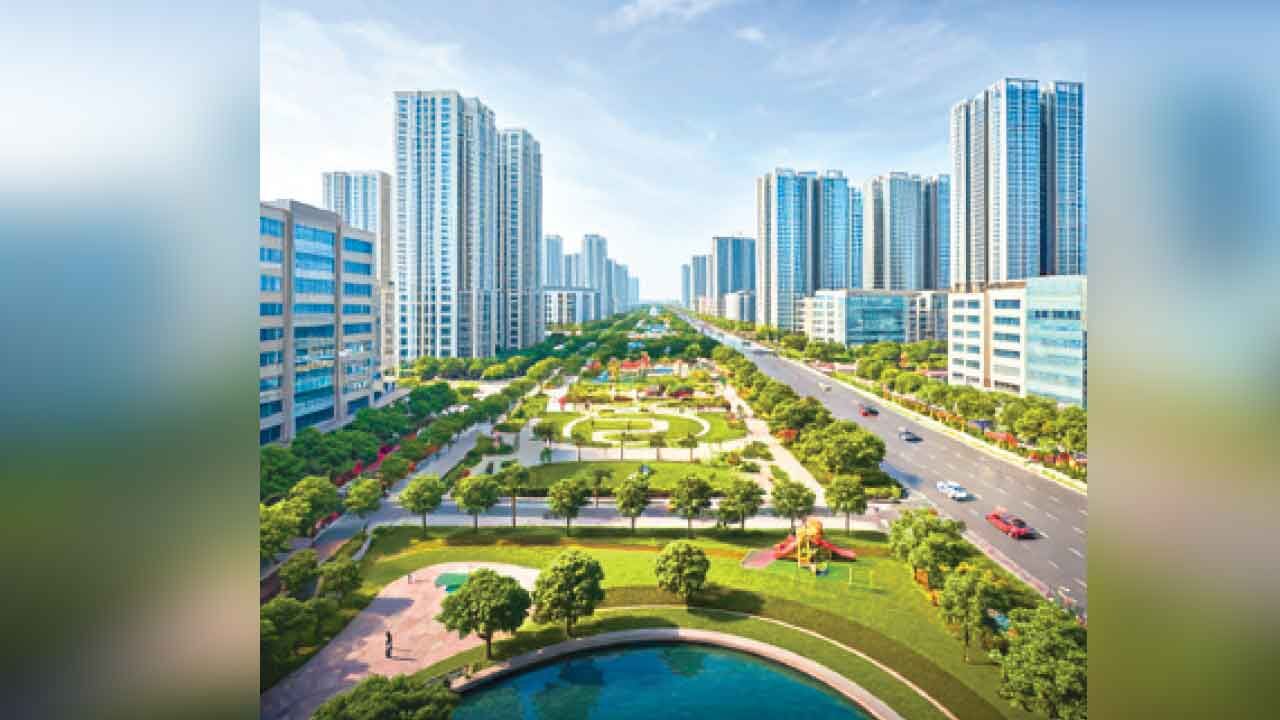Integrated Townships: The Future of City Life
Read latest blogs and articles from Housystan

The Information mentioned here was last updated on:
11/12/2025Welcome to Integrated Townships: The Future of City Life. In the rapidly urbanizing world, where population growth and infrastructure demands strain traditional city systems, integrated townships are emerging as a sustainable and efficient solution to urban challenges. These planned communities combine residential, commercial, educational, healthcare, and recreational facilities in a single, self-sufficient ecosystem. As modern cities grapple with traffic congestion, pollution, and declining quality of life, the rise of integrated townships offers a promising alternative for future city living.
An integrated township is a meticulously planned development that brings together every essential aspect of modern living within a defined area. Unlike conventional housing projects, which primarily focus on residential needs, integrated townships include a full spectrum of urban amenities.
- Verified Tenants/Buyers
- Unlimited Property Listing
- Zero subscription/charges fee
As urban centers expand, cities are becoming increasingly overcrowded and chaotic. Long commutes, pollution, lack of safety, and fragmented infrastructure are some of the pain points for city dwellers. Integrated townships address these problems by offering a holistic urban lifestyle where residents can live, work, learn, and relax—all within walking distance.
Here are several key reasons why integrated townships are becoming the preferred choice for urban development:
1. Reduced Commute Time
One of the biggest benefits of living in an integrated township is the significant reduction in commuting time. With offices, schools, shopping centers, and healthcare facilities located within the township, residents no longer need to travel long distances for their daily needs. This not only improves work-life balance but also reduces vehicular traffic and emissions.
2. Self-Sufficiency
Integrated townships are designed to be self-reliant ecosystems. Residents have access to everything they need within the premises, from retail stores to fitness centers. Some townships even feature their own water treatment plants, power backup systems, and waste management facilities, ensuring uninterrupted services and sustainability.
3. Enhanced Safety and Security
Security is a top priority in integrated township planning. Gated communities, surveillance systems, controlled entry and exit points, and 24/7 security personnel ensure a safe environment for families, children, and senior citizens.
4. Improved Quality of Life
With ample green spaces, dedicated walking and cycling paths, recreational facilities, and social infrastructure, integrated townships promote a healthier and more balanced lifestyle. Unlike conventional city life, which often lacks open space and community interaction, township residents enjoy a cleaner, more peaceful, and vibrant environment.
5. Real Estate Appreciation
Due to their growing demand and superior infrastructure, properties within integrated townships often witness higher appreciation compared to standalone residential units. Investors see them as more stable and profitable long-term investments.
The integration of smart technologies is revolutionizing how townships operate. From smart meters and IoT-enabled home automation to centralized control systems for utilities, modern townships are embracing digital solutions for improved efficiency and convenience.
Some townships also offer mobile apps for residents to manage payments, book amenities, track deliveries, and stay informed about community events. This digital transformation enhances the overall living experience while simplifying administration.
Integrated Townships vs Traditional Urban Living
Feature Integrated Townships Traditional Urban Living
Commute Time Minimal Often long and stressful
Amenities In-built and accessible Scattered and dependent on city planning
Safety Gated and secured Varies; often lower security
Environment Planned with green spaces Congested, limited green zones
Infrastructure Self-contained Dependent on municipal systems
Community Life Strong community culture Often fragmented
The contrast is clear—integrated townships offer a more organized, efficient, and sustainable lifestyle than what traditional urban environments can typically provide.
Government Support and Urban Policy Trends
Governments around the world, particularly in emerging economies like India, are beginning to promote integrated townships through favorable urban development policies and incentives. With schemes such as the Smart Cities Mission, governments encourage private developers to build township projects that align with broader urban planning goals.
Local authorities also benefit from integrated developments, as they help reduce the burden on city infrastructure and offer more controlled urban expansion.
Major Examples of Integrated Townships in India
India is witnessing a surge in integrated township projects, especially in fast-growing metro regions. Notable examples include:
Magarpatta City, Pune – A pioneering project built on sustainable and cooperative principles.
Palava City, Mumbai – Developed by the Lodha Group, offering world-class amenities across a vast area.
GIFT City, Gujarat – India’s first operational smart city and international financial services center.
EON Free Zone, Pune – A mix of residential and IT parks, fostering live-work-play dynamics.
These townships have set benchmarks in terms of planning, innovation, and lifestyle quality, attracting both residents and investors.
The Growing Demand from Homebuyers and Millennials
Millennials and young professionals are at the forefront of this lifestyle shift. With remote work, hybrid jobs, and a strong preference for quality of life and convenience, the demand for integrated townships is surging. These developments align perfectly with modern expectations—offering seamless connectivity, high-speed internet, co-working spaces, and wellness-oriented infrastructure.
Families with children are also drawn to the idea of secure environments with in-campus schools, parks, and medical centers. The availability of such infrastructure within a walkable distance adds to the appeal, especially in today’s fast-paced world.